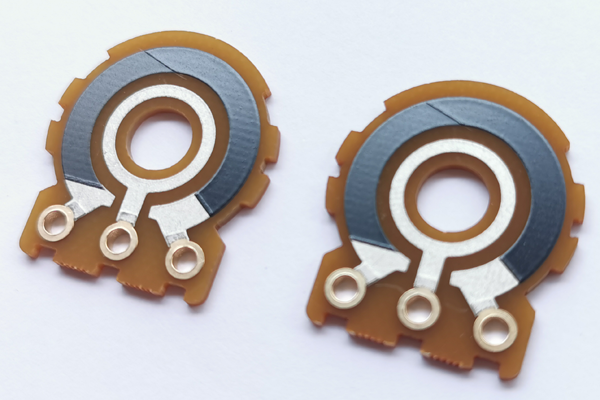Logarithmic Potentiometer PCB
What's Logarithmic Potentiometer PCB?
Logarithmic Potentiometer PCB also called Non-Linear logarithmic Taper Potentiometer PCB, Or Called Audio-Taper Potentiometer PCB mainly used for audio volume control to obtain a more natural linear-perception in sound intensity change when adjusting the volume, because the function of resistance versus angular displacement follows a logarithmic curve, As turn the shaft, the sound intensity seems to increase in a linear manner, even though the actual power variation is logarithmic. Sometimes inverse logarithmic pots are used, for example in audio controls which turn counterclockwise, but also in some other specialized applications.
Some engineers call this type of device a Logarithmic-Taper Potentiometer PCB or log-taper potentiometer PCB. To compensate for the ears logarithmic behavior, Non-Linear logarithmic Taper Potentiometer PCBs were developed to improve it, While it is called logarithmic, it is actually an exponential curve. Because the human ear is sensitive to sound intensity in a logarithmic fashion, When running at low sound intensities a small change in intensity, It is perceived as a big change in volume, while at high intensities a large change is required for the same change in perceived volume.
Logarithmic Potentiometer PCB allows you to print the thick film resistor element on the rigid board, flex board, rigid-flex PCB, or Ceramic PCB, The main performance of such PCBs include carbon resistance (ohm), sheet resistance (ohm/square), and linear tolerance (like<1.0%). and durability (life time) etc.
|

